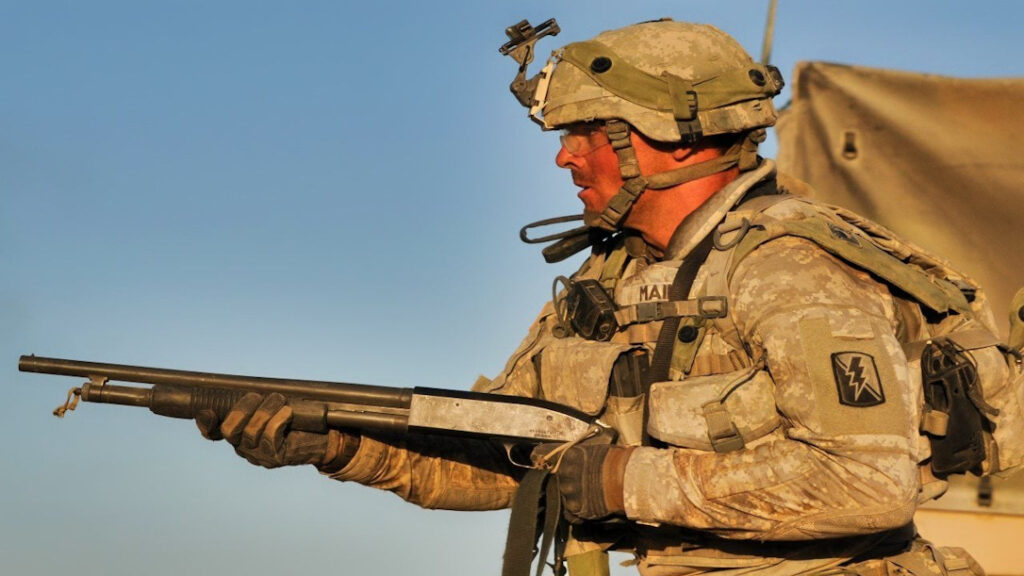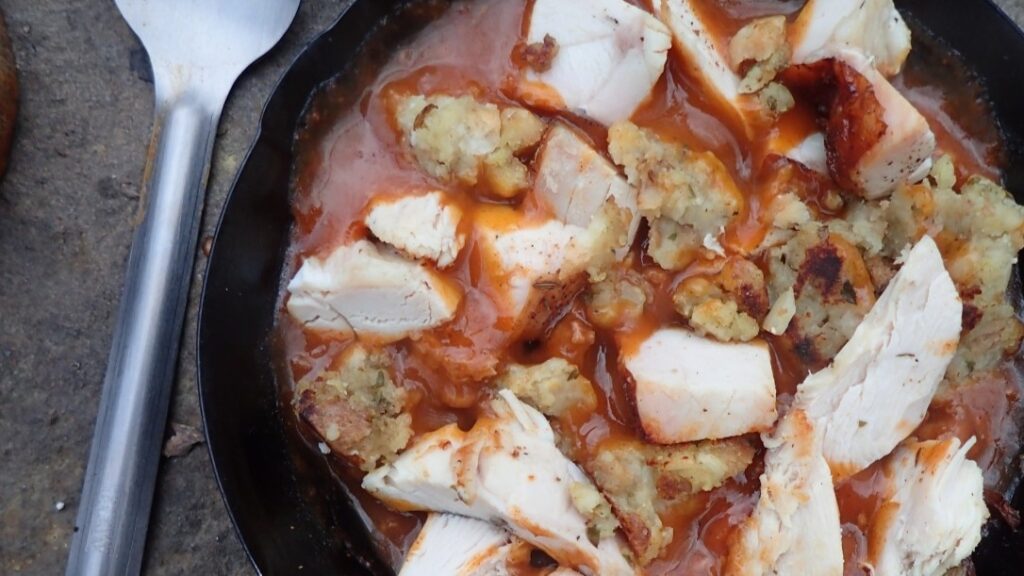I’ve had body armor issued to me professionally for over a decade. Its use is mandatory for a number of military activities even within the United States.
Unlike my intrinsic fascination with firearms technology body armor had never garnered my attention in the same way. Armor was something I was given to wear and was heavy, hot, and uncomfortable especially with training SAPI’s.
Why and how it worked was an explanation boiled down to “It might save your life if you get shot or blown up”. Cool.
Advertisement — Continue Reading Below
Later in my career progression, as I chewed through other subjects, body armor made its way into my sphere of interest. I began to learn the differences between soft and hard armor as well as what threat protection levels were and how they are established, tested, and certified. Here’s the 89 page NIJ document detailing it.
The testing and submission process is incredibly detailed and requirements are printed section by section for anyone hoping to have their product NIJ rated.
After my time in the Marine Corps came to an end looking for a personal plate carrier became a greater priority. In the last several years commercially available armor options have spiked in availability thanks to the GWOT veteran community and general civilian commercial demand. After looking on and off for awhile one finally ended up in my hands.
Advertisement — Continue Reading Below
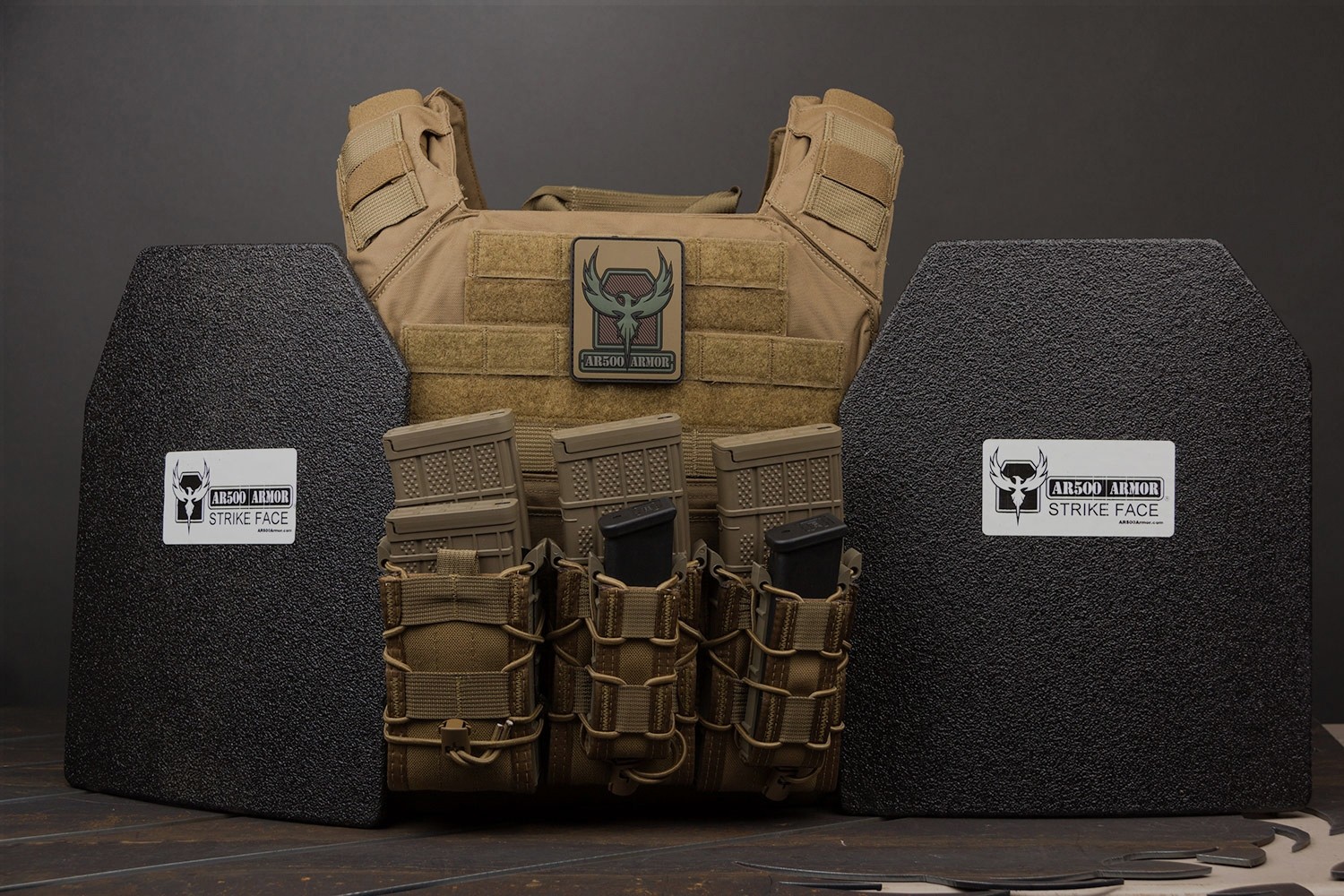
AR500 Armor was one of the early commercial leaders in using hardened steel armor inserts. When they added a composite level IV rated SAPI to their line up I pulled the trigger. I went online and ordered a carrier package.
Let me cover armor ratings briefly.
In testing shots are fired at the selection of submitted armor panels at a distance of 4-6 meters for pistol rounds and 14-16 meters for rifle rounds. The number of test panels that need to be submitted varies based on the desired test rating. Most panels must be shot 6 times and succeed at stopping the rounds. The exception is level IV for which the armor manufacturer will state the number of rounds it will stop in addition to stopping lower threat levels. My issued ESAPI’s were rated level IV for 3 hits for example. The fully detailed protocol is in the NIJ Standard–0101.06
Advertisement — Continue Reading Below
- Level IIA: 9mm and .40 S&W from short barreled handguns
- Level II: 9mm and .357 Magnum from short barreled handguns
- Level IIIA: .357 Sig and .44 Magnum from longer barreled handguns
- Level III: 7.62 (.308 Win, M80 7.62×51) Lead core rifle ammunition
- Level IV: 7.62 M2 AP (30.06): Armor piercing ammunition
Of note the NIJ recommends level IV armor for protection against threats like M855 Green Tip and other rounds with a partial or complete steel core or, at the minimum, a metallic or ceramic level III plate. Non-metallic or ceramic plates rated level III are not recommended against steel core rifle rounds.
AR500 Armor has a varied selection of available products and even offer financing to help customers overcome one of the largest purchase hurdles, up front cost. You can buy each item piecemeal or have them put together one of their Loadout Packages.
Advertisement — Continue Reading Below
I pulled up the Banshee Plate Carrier & Advanced Armor Loadout package after clicking around the site awhile. It combines a U.S. Made Banshee Plate from Shellback Tactical with HSGI Taco X2R and Double Decker magazine pouches and a selection of AR500 Armor plates. The base price includes a pair of flat level III steel plates with the base anti-spall coating.
Progressing through the options list I selected color, hand dominance (for armor cut shouldering a carbine), and armor level. You can then pick your armor profile. Adding trauma pads and/or a set of level IIIA rated soft armor panels as further options. I recommend, at a minimum, adding trauma pads. The more you have absorbing energy from a gunshot impact the less getting shot will suck. It will still suck, just less so.
After configuring your load out and sending your order AR500 will assemble it and ship it out. Estimated wait times are listed. I had my order in about 10 days.
Advertisement — Continue Reading Below

I ordered level IV front and back SAPI’s with 6×8 level III+ built-up anti-spall side plates in the optional add on armor pockets for the Banshee. Trauma pads under all the plates were ordered also. Note: Trauma Pads are not armor! The pads cushion and disperse energy coming through an armor rated plate.
The III+ plates with built-up anti-spall are thicker heavier AR500 steel coated with extra PAXCON. The armor will take more hits of level III threat rounds and the thicker coating will catch more spall and fragments from impacting rounds shattering on the steel. End result, less lost blood.
Advertisement — Continue Reading Below
The level IV plates combine a ceramic strike face with a composite backing and PAXCON coating. They are rated for one stand alone 30.06 Armor Piercing M2 level IV impact and all standard level III threats.
The four plate and padding set up is heavy but it’s as threat protected as I wanted. It feels as heavy as my issued Interceptor with plates but with a much more comfortable carrier. The Banshee is exceptional in this regard.

The Banshee Carrier is configurable. You can slim it down using those nylon loops and the provided buckles to make it a quick on and off carrier with front and back plates. You can keep the cummerbund on giving you increased mounting space (I have an IFAK on my left side). Finally you can add the interior armor pockets to the inside and place soft or hard 6×6 or 6×8 armor inside for additional protection.
Advertisement — Continue Reading Below
Regardless of whether I’m running my side plates or not I keep the pockets on and trauma pads in. This keeps the carrier closer to my full armor circumference and rides very comfortably while wearing it.

Continuing the comparison to the issued armor it’s a complex series of trade offs.
The Interceptor has a wrap around level II flak and stab resistant Kevlar layer similar to many police vests. This gives a small measure of all around protection, especially from lower velocity threats like IED fragmentation. It will do nothing for rifle fire.
Advertisement — Continue Reading Below
Currently I’m not up armoring for an IED threat. If that becomes a necessary reality I will likely buy and additional carrier, maybe a low profile level II to wear beneath. I’m up armoring for high velocity ballistic threats, pistol and rifle.

There is a gap in protection with the Banshee at the front and rear of the side plates where a round could enter largely unopposed. With the wrapped level II armor of the Interceptor it would be rated to stop 9mm.
What you trade is the continuous lower protection of the level II for the level III protection for the majority of the area. The vulnerability around your arm with an unopposed route to your lungs is there regardless. The hard plate set up from AR500 again serves my need.
Also looking at a great many carrier designs they’re foregoing armor for mobility. Front and rear plates are the most crucial while up armoring or keeping mobility is modular and mission specific, Mobility > Armor
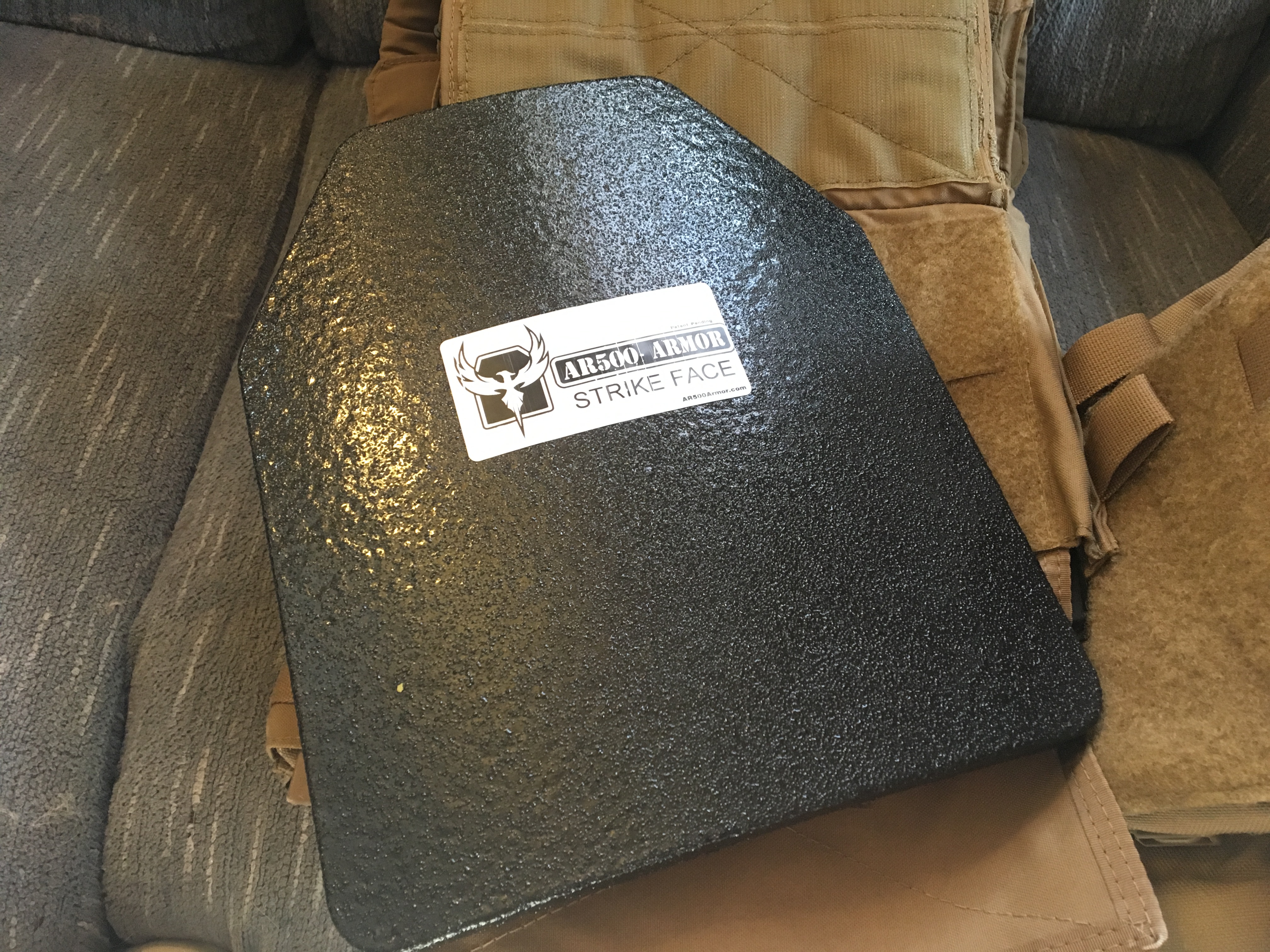
The curved level IV plates over trauma pads are a 10×12 standard and fit perfectly with padding or soft armor.
I did tested the plates when they arrived. Putting slight torsion on the plate by twisting the top and bottom should produce no noise, grinding, or shifting. If it does the plates ceramic is compromised and it must be replaced. The plates are warrantied 5 years in such a case. Don’t drop your plates.
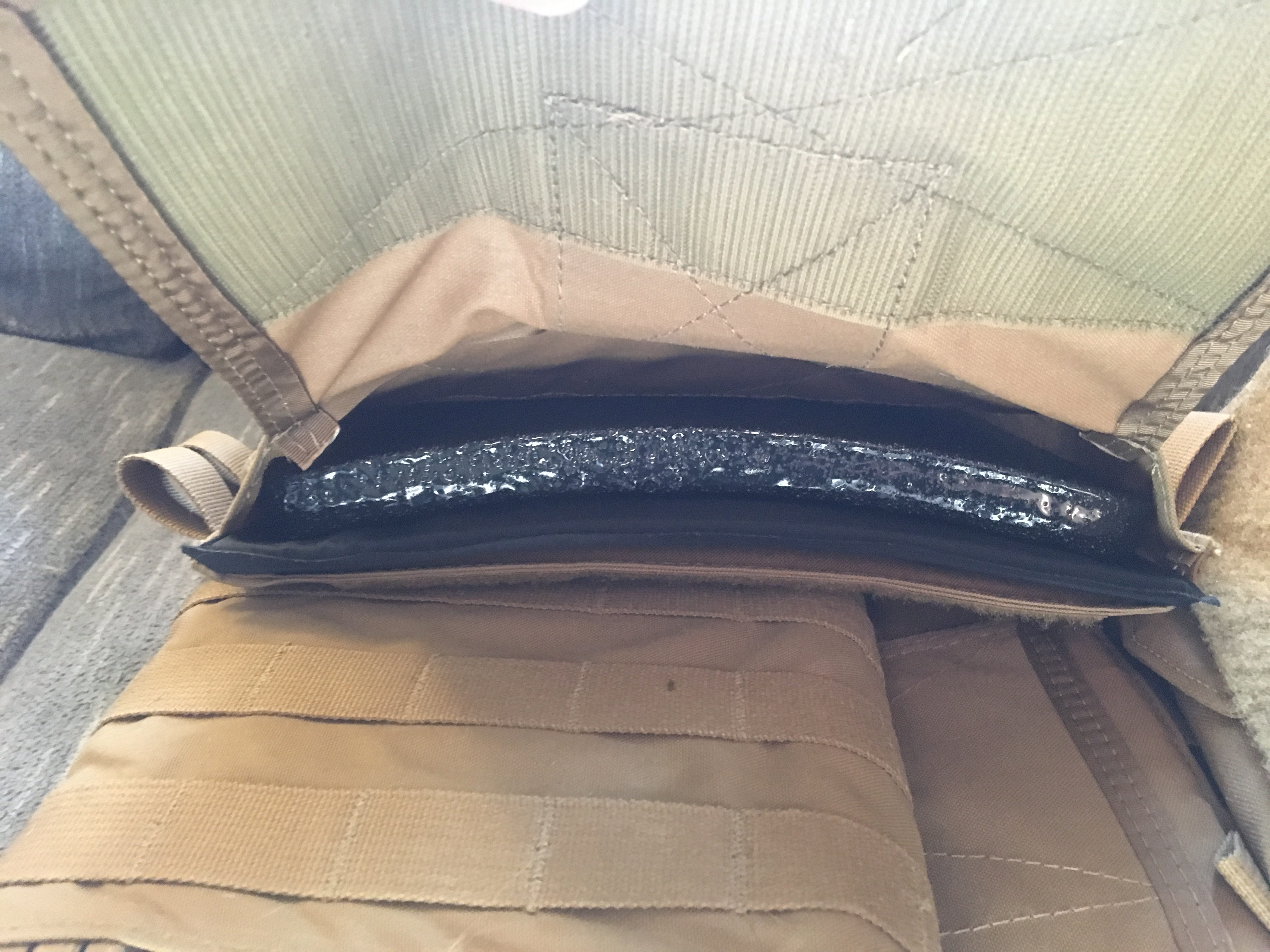
The SAPI’s install easily though the bottom of the carrier with plenty of support from the nylon and Velcro enclosure.

The Banshee’s padded shoulders keep the weight comfortably distributed. The sizing adjusts easily and the nylon straps tuck away into the shoulders. Quick release buckles are at the shoulders but hidden under the padding to help prevent damage and accidental (or purposeful) detachment. The PALS webbing can take a radio or mic, a GPS receiver, or a hydration tube conveniently. There is a drag handle on the back panel. It is actually a drag handle able to haul the weight of the carrier plus the person wearing it instead of just cosmetically stitched to the top (an issue on knock off carriers) ready to rip off under any stress.
Testing wise I’ve run this carrier up and down the range, the house, and on occasion the gym for a few months. It breathes well and stays temperate. It doesn’t shift or loosen when fit properly (usually a two person job, sizing), and the plates and pads don’t bunch any material which would create uncomfortable pressure points. There’s a generous amount of Velcro on the upper webbing you can use to morale patch up to your hearts content or add additional equipment higher on the carrier. The nylon, Velcro, and stitching have all held under weight and wear.
AR500 Armor has provided a carrier and armor package that meets my requirements superbly. The carrier is easily configured and comfortable. I’m able to adjust that configuration to meet my requirements quickly.
The provided HSGI equipment allows easy staging of 4 rifle magazines and 2 pistol magazines on the plate carrier with almost any rifle or carbine and sidearm combination able to be supported.
The ride height of the carrier above the waste line allows use of belt mounted equipment so wearing a radio, handcuffs, a flashlight, or spare magazines on the belt is not a problem. Having certain equipment staged lower like my Optimal Drop Pistol Platform makes getting around the carrier mass easier.
The set up gets my full approval, and there is always the option to change out armor inserts down the road for lighter or variable options.
Head over to AR500 Armor and check out the Banshee or start another armor package that fits your needs.
Also keep an eye out for our stop with them at SHOT Show!


